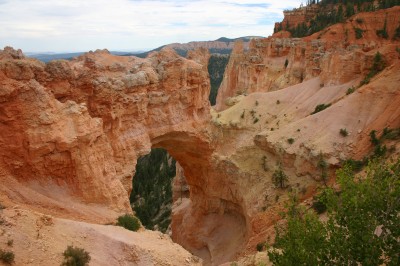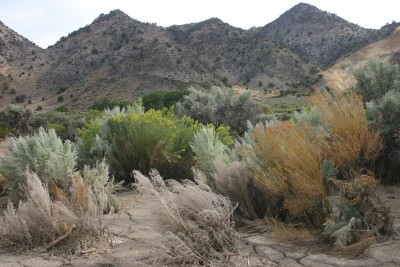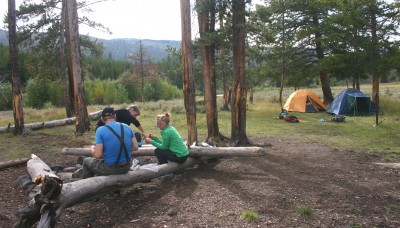An ocean of quirky rock formations spreads before us. In the Bryce Amphitheatre in Bryce National Park countless stony sentinels stand silent in the landscape, glowing warm and red in the sunset. Who else could paint with such imagination and such a sense of colour but Mother Nature? We are awed. We, as human artists, can only hope to copy nature’s creations.
We have left Yellowstone and Grand Teton National Parks in Wyoming behind us, travelled a long road through cowboy country and Mormon country, through Wyoming, a corner of Idaho, and almost the whole length of Utah to get to Bryce National Park. We get up at the crack of dawn to catch sunrises and shiver and wait impatiently at dusk to catch sunsets as they light up the pinkish-red rocks of this amazing national park to a fiery, flaming red.
We hike through the stony, surrealistic landscape, marvelling at the shapes created by aeons of wind, weather and water. Mother Nature has been busy here, sanding, grinding and forming the limestone for millions of years. Here and there trees grow, their roots grappling the rock like claws grasping for dear life. Even forests are established – but then to succumb to fire, as we also see proof of: scorched areas where spiny black silhouettes stand on hills previously covered by green, fragrant pines.
We hike down, down and down on the Navajo Loop Trail, the August sun beating down on us. We see finns and arches formed by the freezing and thawing of slightly acidic water inside cracks in the rock. With time gravity pulled the loose bits of rock to the ground, forming holes and creating arches. When the arches erode spires, monoliths and hoodoos are created, their fate in part determined by the composition and hardness of the rock.
We pass through the cool and shady area called Wall Street, a deep and narrow canyon. Past this dark and narrow canyon we are out in the sun again and look up to see more spires and hoodoos. One of the famous formations is called Thor’s Hammer. It is obvious that one day the handle of the hammer will erode away and the head of the hammer will topple to the ground and become just an ordinary rock. What will Thor do then?
Amazingly, people have lived in this rocky landscape for about 12,000 years, eking out a living in the green valleys that dot the Colorado Plateau by hunting and farming. When white settlers came to the area they met the Paiute people. The Paiute’s explanation of the hoodoo formations is that the ancient animal legend people displeased the coyote who then turned all the humans into stone. And here they still stand, tall and erect.









































